An Interview with Dustin Jones, Physical Therapist, RKC, CSCS
By Adrienne Harvey, SrPCC, RKC-II, CK-FMS
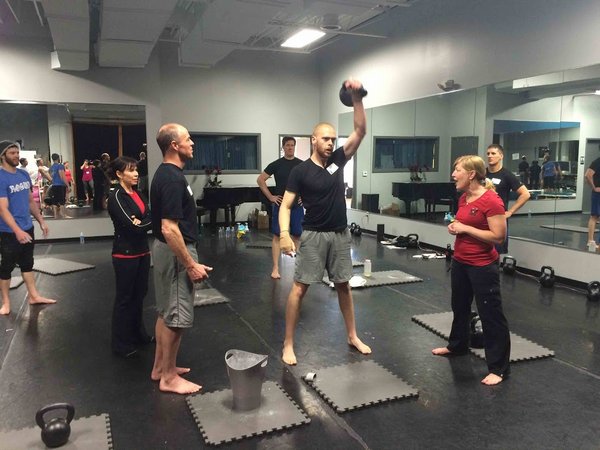
Dragon Door: How did you first get involved with fitness and physical therapy?
Dustin Jones: My first experiences were from the patient/client end of things. I ran track in college and was injured for much of my career. I spent a lot of time in the athletic training room getting care for my different injures, but that’s also when I started to think about physical therapy as a profession.
Dragon Door: How long have you been a physical therapist?
Dustin Jones: I have been practicing for about three and a half years now. I’ve learned a lot—mostly about how much I don’t know!
Dragon Door: How did you find out about kettlebells?
Dustin Jones: In physical therapy school I was also personal training since I had certified for CSCS while in undergrad. I was working with a few clients in a typical gym setting and trying to help them to the best of my ability. At the time, I had my clients counting all their calories, writing down what they ate, and working on every machine we had in the gym. But, they weren’t getting results—I was really surprised they were paying me!
After PT school and an unsuccessful stint as a personal trainer, I found myself working part-time at the first minimalist shoe store in the country, Two Rivers Treads. A physician, Dr. Mark Cucuzzella, owned the store and really helped create a culture that valued movement and health. The staff at the store, along with Tim Difrancesco of the L.A. Lakers, led me to discover MovNat,
Functional Movement Systems (FMS), and kettlebells.
Life events eventually took me to Columbus, Ohio where I met Lori Crock, RKC Team Leader. We started to work together and her love of kettlebells was contagious. She mentored me and is the reason I have my HKC and
RKC certifications.
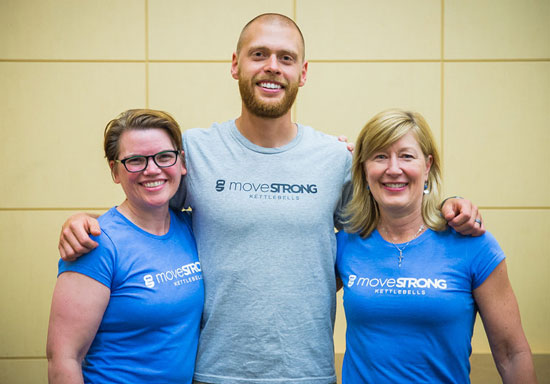
Dragon Door: When did you earn your HKC and RKC certifications?
Dustin Jones: My
HKC was in October 2014, and my RKC was in April 2015. Andrea Du Cane led both of the workshops which were held at Lori Crock’s facility, MoveStrong Kettlebells in Dublin, Ohio.
Dragon Door: How are you using kettlebells in physical therapy?
Dustin Jones: I am working in home health, so many of my patients are home-bound adults—meaning it would take them a considerable effort to leave their homes. I use basic kettlebell lifts and carries with them to improve their conditioning, posture, and strength.
It’s very difficult for most of my patients to move in a way to cause cardiovascular adaptation. Yet, I can put a
kettlebell in a patient’s hand and have them walk around their home. This simple task can be enough to cause some adaptation.
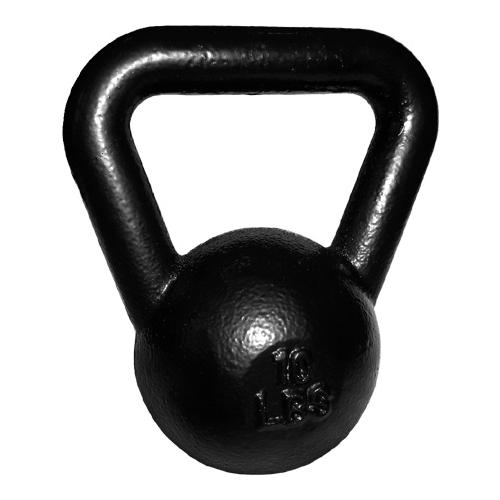
Beyond conditioning, kettlebell carries are also my most powerful tool for improving posture. Many of my patients don’t respond to verbal or manual cueing, but that all changes when I put a kettlebell in their hands. The weight provides intrinsic feedback that can help someone who’s hanging on their rib cage to stand 4" taller instantly!
Along with carries, we also do a lot of goblet squats. Many of my patients have a very tough time getting up from a chair or toilet. A
light kettlebell will let them offset their weight enough so they can stand up from a surface without using their hands. This is huge for many of my patients—it may have been decades since they could just pop up out of a chair.
Dragon Door: What are some of the first steps you take with a new patient or client?
Dustin Jones: At first, I try to get an idea of what it's like to walk a mile in their shoes. I believe some of the biggest limitations for the elderly are perception and fear—these limitations really drive their behavior and movement quality. Through conversation, I’ll try to understand their perception of their own physical abilities with different tasks. I’ll also want to learn if they've had any recent falls or traumatic events that could bring emotional baggage which could impair their performance. Next, I’ll want to find out how they feel about getting on the ground and back up. Helping a patient become able to independently get up from the ground is some of the best work I can do.
As treatment begins, I try to focus on using interventions that will give a patient early wins. I want them to have early victories so that they begin to develop confidence which will positively impact their performance. If I’m not really tuned in with how someone is feeling, and we try an activity before they're mentally or physically ready, then it may only reinforce their fears along with poor movement habits. Once a patient has a few early victories, we progress and increase the difficulty while making sure they're still comfortable and confident.
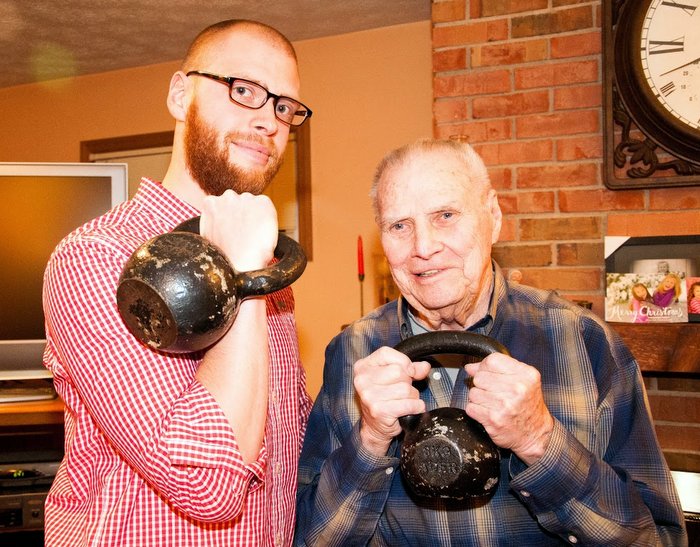
Dragon Door: How do you acclimate your patients to the idea of picking up an unusual looking weight like a kettlebell?
Dustin Jones: I try and figure out the tasks they have to do at home on a day to day basis. Many times, these tasks include cooking and using pots and pans. Most of my patients are big fans of cast iron cookware which can be difficult to lift. I make sure to elaborate on how using kettlebells can help them continue cooking with their cast iron cookware. The kettlebell then becomes a tool to help them live a better life instead of just a heavy iron ball.
Dragon Door: I cook with my grandmother's old skillet almost daily and there’s definitely nothing lightweight about it! How did you start training home-bound adults?
Dustin Jones: My background was in sports medicine which is about as far away on the rehab spectrum as you can get from home health. But when I began working with
Lori Crock, I wanted a flexible physical therapy job that would supplement my time spent in the gym. Home health did just that. In the beginning, it was honestly just a job to help pay the bills. But as time went on, I really started to enjoy home health and saw the impact I could make in people’s lives.
Dragon Door: It seems like home health could be extremely satisfying work...
Dustin Jones: It really is! You’re in a position to help someone remain as independent as possible in their home. You can see the fruit of your work on a day to day basis as patients are able to live their lives more fully.
Beyond the satisfaction though, I often feel like I get more out of the interactions than my patients do. I’m only 29 and have a lot to learn about life. Everyday I get to spend time with people who survived the Great Depression, lived through WWII, and have seen more change in this world than I can comprehend. They have a lot to share and I am very grateful to receive any wisdom they give.
Dragon Door: Do you have any special advice for working with the elderly?
Dustin Jones: A few things come to mind: be empathetic, get on the ground, and don’t be afraid of iron.
By being empathetic, you’ll really try to put yourself into someone else's shoes. This has been very challenging for me because all I know is my 29 year old body. Even though I've had a few injuries, it’s impossible for me to fully understand what it's like to have 80+ years on my frame! Understanding comes from spending time with people, learning their stories, seeing what's difficult for them, and building relationships. Empathizing will ultimately lead to better programming and better outcomes.
I wrote an article about getting on the ground, but in general, ground mobility is a great way to develop strength, coordination, and reduce a patient’s fear of falling.

Finally, don’t be afraid of iron—it’s easy to be terrified of challenging the elderly because we know what could happen if we injure them. This can be a healthy fear, since we don’t want to excessively load a poor movement pattern. But, with good judgment, we can load a deadlift, squat, or kettlebell carry to the point that an elderly person can get some practical strength gains. This is huge as strength is one of the biggest indicators of health in the elderly individual.
Dragon Door: Obviously they'd need to be cleared by a doctor, but do you have any other advice on how to keep older clients and the elderly safe during training?
Dustin Jones: Learn as much as you can about changes to the body with aging. Different structures change in different ways—and at different paces as the years progress. Knowing about those changes will dramatically improve the effectiveness and safety of your programming. Safety is key as the stakes can be higher with elderly clients. For most people, a training mistake will result in a minor injury. But for the elderly, a training mistake could lead to an extended stay in the hospital.
I would also recommend becoming familiar with monitoring vital signs. You can pick up a wrist blood pressure cuff and a pulse oximeter for a reasonable price. These devices will give you valuable information on whether your tasks are too difficult—or not challenging enough when working with the elderly, especially the frail elderly.
Dragon Door: What's next in your career?
Dustin Jones: I hope to continue growing in my skills as a clinician. I just completed my RKC, so I also hope to serve as a bridge between functional fitness and elderly/geriatric rehab. I feel there’s room for more collaboration between the fitness and rehab fields in working with older adults. We have a lot to learn from each other in how we can better serve the elderly in our lives.
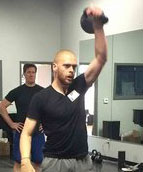 Dustin Jones. PT, DPT, CSCS, RKC is a Physical Therapist with Gem City Home Care. He can be contacted through his website: dustinjonespt.com
Dustin Jones. PT, DPT, CSCS, RKC is a Physical Therapist with Gem City Home Care. He can be contacted through his website: dustinjonespt.com
Back